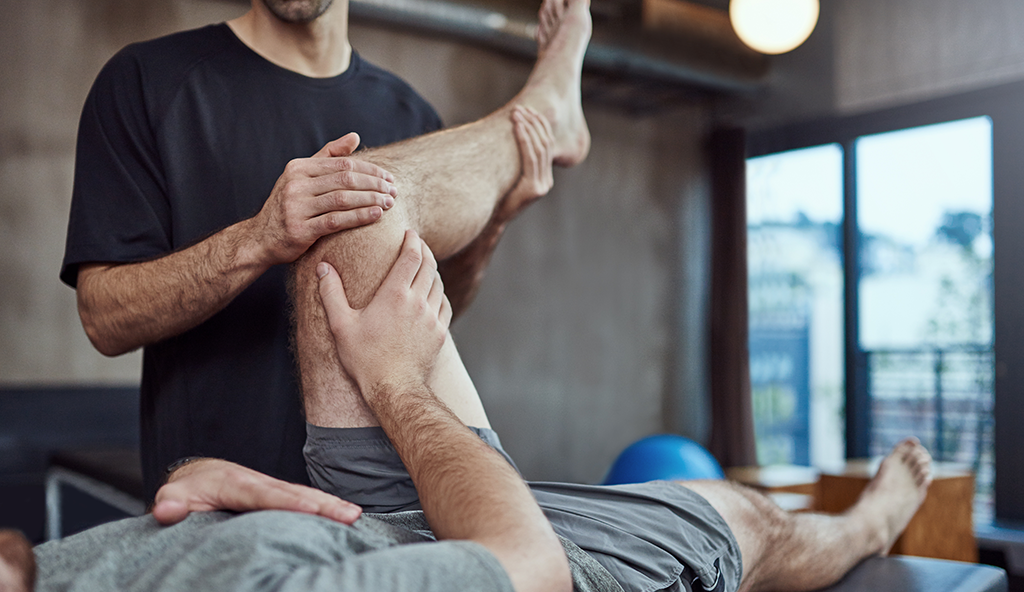
Injury Overview
In many individuals, repetitive use of the shoulder can result in painful symptoms that make everyday activities difficult to perform. Subacromial impingement is one specific condition that affects adults, most commonly over the age of 30, and refers to the pinching (impingement) of the tendons of the rotator cuff between the humeral head and the acromion process of the shoulder blade. Irritation of the surrounding tendons leads to inflammation of the bursa which results in shoulder pain, and the inability to move the arm above the shoulder. As the inflammation progresses, the symptoms become more severe and will occur more frequently.
In some cases, subacromial impingement may be associated with biceps tendonitis and/or rotator cuff tearing. Another factor that may cause shoulder impingement is weakness of the muscles around the shoulder blade, which cause it to sit in an inappropriate position and may predispose patients to the condition. In addition, some patients have an abnormal shape to their bone, or have had a previous shoulder injury, both of which may be predisposed an individual to developing subacromial impingement.
Symptoms
The primary symptom associated with subacromial impingement is a sharp, piercing pain felt on the front of the shoulder with any type of overhead activity. If the arm is resting, pain may not necessarily be felt, however, the arm will experience overall weakness making it difficult to use the affected arm for chores or activities.
Diagnosis
Dr. Anz will conduct a thorough physical examination that will include tests to check for pain level and mobility of the shoulder. Physical exam tests to assess for impingement include the impingement tests of Neer and Hawkins. While shoulder impingement is relatively easy to diagnose based on the physical exam, Dr. Anz will require an X-ray and potentially a MRI to rule out if any other condition that may cause or contribute to the shoulder pain.
Treatment
In cases of subacromial impingement Dr. Anz will first recommend conservative treatment measures which consist of anti-inflammatories, rest, and physical therapy. In many cases, these treatments are effective and surgery will not be needed. In cases with continued pain, an injection of corticosteroids to the subacromial bursa may help alleviate pain and allow the patient to make progress with physical therapy and accomplish long-standing relief.

Surgical Treatment
In more serious cases of subacromial impingement, Dr. Anz may recommend a surgical treatment. Arthroscopic shoulder surgery is often used to correct this condition. This surgery is performed through several very small keyhole incisions through which a camera and special surgical instruments are inserted. During this operation, Dr. Anz will assess the rotator cuff to make sure there is no injury. The area of inflammation in the subacromial bursa is then removed. The bone spurs causing the pinching are also removed and the entire area is smoothed down to allow normal, pain-free motion. In complex cases of impingement, Dr. Anz may also treat other conditions that will present themselves once he is inside the shoulder joint. These can also be addressed during the surgery, and may include arthritis between the clavicle and the acromion, as well as inflammation of the biceps tendon.
Post-Operative
Following surgery, Dr. Anz may request that the arm be kept in a shoulder sling for a period of time to allow healing. Soon after, he will prescribe a thorough rehabilitation program. This program is a combined effort between the patient, Dr. Anz, and the physical therapist and will introduce exercises, strengthening moves, and active range of motion in time. It typically takes 2 to 4 months to achieve complete relief of pain, but in patients who presented complex cases, full recovery may take up to a full year.
—
For more information on subacromial impingement, or to discuss your shoulder pain and shoulder injury with Dr. Adam Anz, please contact the Gulf Breeze, Florida orthopedic surgeon, Dr. Adam Anz located at the Andrews Institute.




